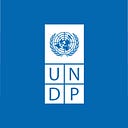Volcán de Fuego: Inside the emergency response
On 3 June 2018, the Volcán de Fuego erupted in central Guatemala, producing ash columns that reached 6,000 metres above sea level and pyroclastic flows that quickly reached the canyon of Las Lajas.
Nobody expected that day to awaken to the fury of this colossus, one of Central America’s most active volcanoes. The National Institute of Simology, Volcanology, Meteorology and Hydrology (Insivumeh) said it was the strongest eruption in recent years.



Relief workers, firefighters and hundreds of rescuers quickly travelled to the most devastated areas. Members of the Guatemalan Army and the National Civil Police, first aid workers and rescuers from the National Coordinator for Disaster Reduction (CONRED) came together quickly. With the support of local authorities, community leaders and the population, the mission was to save lives. Seven people were reported to have been killed, 300 wounded and one million affected. As it turned out, those figures would rapidly increase.
The Council of Ministers immediately declared a state of emergency in the three regions most affected by the eruption: Escuintla, Chimaltenango and Sacatepéquez.



While rescue efforts continued, solidarity from national and international partners commenced, including support from neighbouring countries and international organizations.
As of 4 June, 65 incidents were attended to and 1.7 million people were confirmed to be affected. Of these, 3,265 people were evacuated and 1,689 placed in shelters. The number of injured increased to 46 and the number of deceased to 25.

Resources and humanitarian assistance were mobilized in the initial shelters, where priority was given to women and children. Commercial businesses were transformed into warehouses where donated goods were classified in order to guarantee a quick and smooth delivery to the people according to their needs.
Within the UN System, several coordination mechanisms were activated to respond to the emergency. A humanitarian mission comprised of UN officials, travelled to the town of Escuintla to gain first-hand knowledge on the conditions in shelters and observe the on-going relief efforts.




At UNDP headquarters, the Crisis Management Support Team (CMST) agreed to disburse US$300,000 or the immediate response to the crisis.
A emergency activities slowly phased down, the recovery phase of the response began. The Early Recovery Cluster, led by UNDP, was activated to support the post-disaster recovery process within the framework of the country’s public policies, while encompassing the reintegration of families affected by the eruption of Fuego Volcano.



On 25 June, UNDP’s team met to follow up on the actions and lay the foundations for the recovery process to be implemented over the following months. While the rescue efforts continue, the transfer of materials for the construction of temporary shelters was also kick-started.
As of 23 July, the official figures amounted to 108 incidents attended to; 1.7 million people affected; 12,823 people evacuated; 8,543 assisted; 2,878 sheltered; 27 wounded; 287 missing persons; and 135 deceased.

The recovery will be the opportunity to initiate a process that will not only repair but also build back better. “It is key, at this stage, to keep in mind who the real actors of the recovery process are,” UNDP Guatemala Country Director Ana María Díaz said. “The communities, the affected people, the local organizations, the micro-businesses and the community network have to play an active role in this long-term process.”
Story by UNDP Guatemala; photos by CONRED and UNDP Guatemala
